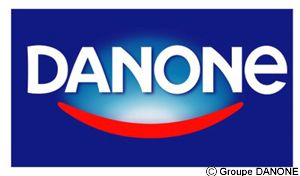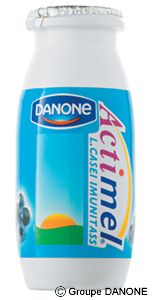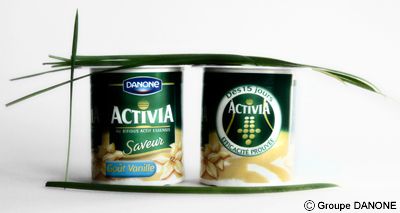Article written by Ildikó Szalai, Packaged Food Analyst at Euromonitor International
Danone records strong volume growth in all regions and categories but still a decline in overall value sales.
Danone’s 2010 first quarter results reported over 8% growth compared to the same period the previous year. On a like-for-like basis, excluding the effects of currency exchange rate fluctuation and scope of consolidation, total group sales grew by 7%, driven by a 10.8% increase in volume and a 3.8% decline in value.
Recent initiatives deliver positive results across all categories
The company’s Fresh Dairy division reported 7.6% like-for-like sales growth for the first quarter of 2010 compared to a 1.2% decline for the same period the previous year. The most significant improvements in the category were achieved in the US, Russian and French markets.
Danone’s greater focus on the US yoghurt market could well pay off as, unlike in many other packaged food categories, it does not suffer from considerable maturity and is expected to post more than a 4% CAGR over the 2009-2014 forecast period, which in absolute constant value terms will account for some 15% of global yoghurt market growth over the same period. Establishing a stronger growth platform in Russia is also a target, with a dynamic CAGR of 6.1% expected over the forecast period. One of the key reasons behind this is the shift to yoghurt from traditional sour milk drinks, especially among consumers with greater spending power.
During the recessionary quarters of 2009, Danone made strategic moves to reduce its reliance on an exclusively premium-positioned portfolio. The company readjusted its strategy most notably in dairy, increasing its focus on core ranges of products to offer consumers better value.
‘Price reset programme’ in Fresh Dairy
Since the end of 2008 Danone has been implementing a price ‘reset programme’, which involves strengthening the group’s lower-priced, core ranges, substantial consumer price reductions, new product and new format introductions and intensified marketing campaigns. The programme has resulted in positive volume growth and delivered improvements in share in selected markets, but has not yet reversed the decline in value sales. In the latest quarter, organic growth was driven by a 12.5% volume rise and a 4.9% decrease in price/mix?
Danone withdraws health claims for Actimel and Activia
With the release of the improved sales results, Danone also announced it will withdraw an application to the European Food Safety Authority (EFSA) to approve claims about the health benefits of two of its products. Danone had claimed that Actimel drinking yoghurt strengthens the body’s natural defences, especially those of children, while Activia aids digestion. Danone is voluntarily withdrawing the claims from products sold in France, while UK regulators had already banned an Actimel advertisement last year. Danone says this decision is due to the lack of clarity with regard to European regulations on health and nutrition claims and the company has scheduled a new meeting with the EFSA for 1 June. With the latest financial results, Danone claims that new advertising in the UK and France, without using the specific health claims, has not led to any noticeable impact on sales.
Baby nutrition continues to be the best performing category
Danone’s global Baby Food and Medical Nutrition business continues to deliver the company’s best results. With like-for-like sales growth of 8.5% and 9.3%, respectively, although from a significantly smaller base than Fresh Dairy, the two divisions combined accounted for just over 26% of the company’s first quarter sales in 2010. Expansion in the Baby Nutrition division was driven by a volume rise of 8.9% and a value decrease of —0.4%.
Milk formula products remained the strongest performers in the category, reflecting market trends. Over the 2009-2014 forecast period milk formula is expected to outperform all other baby food categories with a CAGR of 5.6% globally, while, for example, prepared baby food is forecast to grow at a comparably lower 2.1% CAGR over the same period.
Intense innovation activity was set out as the main growth driving initiative in the Baby Food and Medical Nutrition division. This included, for example, pregnancy and lactation products in France and Ireland and Almiron Multicereales Bifidus probiotic baby cereals in Spain.
Growth in water also improves, although remains the lowest of all categories
Danone’s bottled water operations posted 2.3% like-for-like sales growth in the first quarter, based on strong volume growth of 8.5% but offset by a value decline of 6.2%. Emerging markets, especially Indonesia, Argentina and Mexico, contributed the most to volume growth and accounted for 55% of divisional sales. Some developed markets, eg Japan and Spain, continued to have a negative impact on value growth in the division.
The group has announced a short-term action plan to reignite growth in the category, mainly focusing on the introduction of larger formats of water products in developed markets, specifically in France and Spain. Additionally, it will focus on the expansion of the Bonafont brand in new emerging markets and the continued development of the Mizone label.
Danone’s bottled water business has suffered the most from the economic downturn and accelerating growth in the post-recessionary era is going to be challenging for Danone as consumers who switched to private label products or simply opted for tap water will take longer to trade up again in the still unstable economic climate.
Outlook for 2010 financial year
For the full 2010 financial year, Danone has reaffirmed its target of like-for-like sales growth of at least 5%, and, without further quantifying, is aiming for a stable trading operating (EBIT) margin compared to 2009 on a like-for-like basis.
Danone’s latest initiatives, the price reset programme and intense innovations have delivered positive sales results and particularly boosted volume sales. However, value sales have continued to decline across all categories, with the exception of the small-sized Medical Nutrition division. The group will continue to face considerable challenges, such as continuing reduced spending power in developed markets and fluctuating raw material prices in the industry.
Ildikó Szalai, Packaged Food Analyst at Euromonitor International


